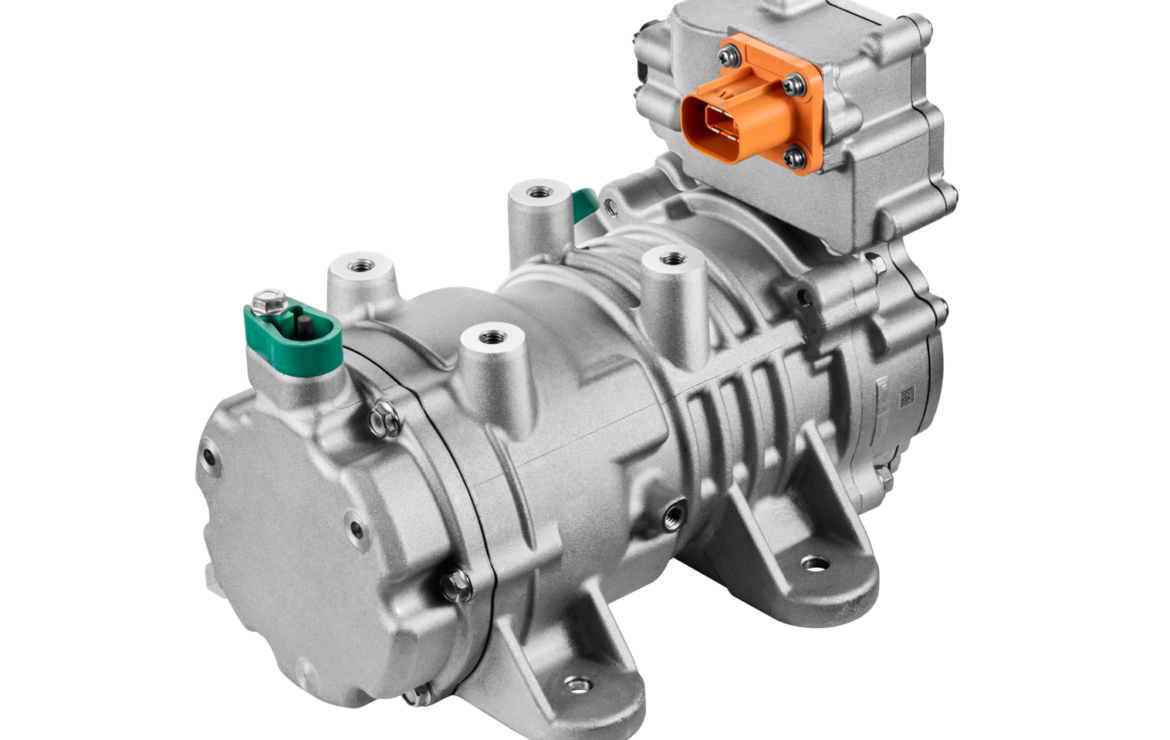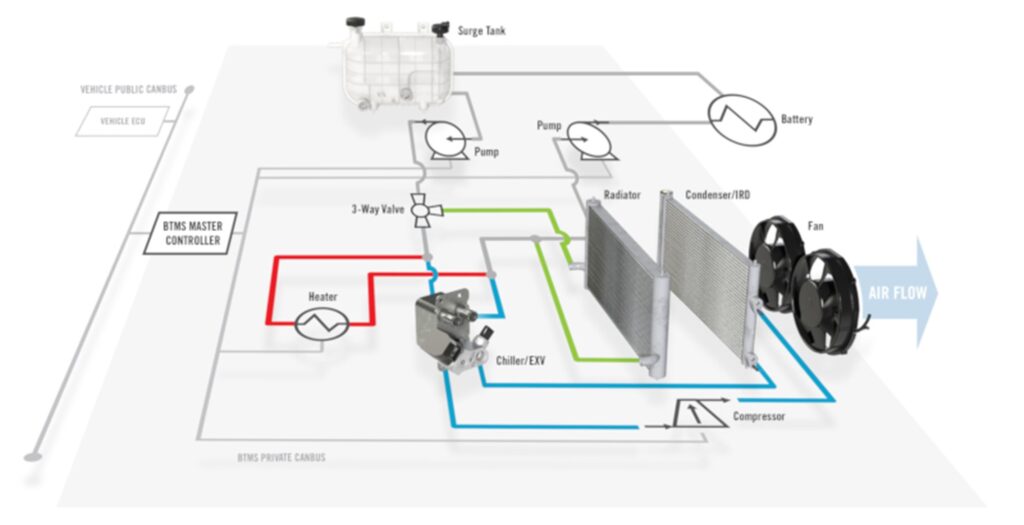
Compressors for Commercial EV Battery Thermal Management Systems
Cooling is an essential part of any electric vehicle. This is because battery life and performance depend upon the battery being kept within its optimum temperature range, typically between 20°C and 45°C. As batteries discharge and provide energy to the vehicle, they heat up; charging also builds heat in the battery. Therefore, cooling may be necessary to keep the battery within this range. Without cooling, if heat is allowed to build, then battery performance is reduced, limiting the range of the vehicle and the power available, along with battery life being negatively impacted. If the ambient temperature is far enough below the battery pack temperature, a passive cooling loop can be used. This loop has a radiator to reject heat from the coolant to ambient air. In other circumstances, an active cooling loop is required.
At the core of the function of the active cooling loop in a Battery Thermal Management System (BTMS) in a commercial electric vehicle is a refrigeration cycle, which works to cool the battery in a similar way to how a domestic refrigerator works:
 In an evaporator, heat is transferred from the cooling circuit of the battery to a refrigerant at a lower temperature than the circuit. The refrigerant starts as a two-phase mixture of liquid and gas but becomes fully gaseous as more heat is transferred to it.
In an evaporator, heat is transferred from the cooling circuit of the battery to a refrigerant at a lower temperature than the circuit. The refrigerant starts as a two-phase mixture of liquid and gas but becomes fully gaseous as more heat is transferred to it.- The refrigerant is then compressed, increasing its temperature and pressure.
- The hot refrigerant is then passed through a condenser, where heat is released from it to the cooler surroundings as it changes state from gas to liquid.
- The liquid refrigerant is then passed through an expansion valve, lowering its temperature and pressure and changing state from liquid to a two-phase mixture of liquid and gas before returning to the evaporator.
Therefore, the compressor can be seen as critical to the performance of the active cooling loop in a BTMS, as it is the only component doing work on the refrigerant. It has a challenging job to do: it must be as efficient as possible to minimize energy consumption and maximize vehicle range. It should also be lightweight to minimize the extra energy needed to move the vehicle with it installed. It should also be durable, maintaining performance and efficiency across its lifetime, even when exposed to extreme atmospheric and operating environment conditions.
In internal combustion engine vehicles, compressors are typically powered directly by a belt from the engine, meaning that piston compressors are commonly used. A commercial electric vehicle has different requirements, however. As there is no internal combustion engine to drive the compressor, a belt drive makes little sense; the cooling circuit is needed at low ambient temperatures to cool the battery; reliability is essential because of the consequence of a failure on the battery’s life; and finally, efficiency is of paramount importance to maximize vehicle range. Therefore, scroll compressors are used by Modine in a Battery Thermal Management System for this function. These lightweight compressors allow for high efficiency across a wider range of speeds than displacement compressors and are powered directly by an electric motor.
The HV Electric Compressor from Modine is field-proven in a variety of challenging environments. To assure reliability in harsh environments, they are IP67 rated. To match the available voltage in the vehicle, different models are available to operate with voltage inputs between 200V and 850V DC and at speeds between 800-8,600rpm. The compressor is designed to work with either 12V or 24V control voltages and is CAN bus compatible for flexibility and ease of integration (J1939 CAN2.0). The compressor is tested to ISO 16750, EMC CSIPR 25 Class 3, and ESD industry specifications, ensuring reliable performance in the application. Finally, low vibration, low noise, small volume, and a lightweight aluminum design with integrated feet also characterize the compressor. In essence, the HV Electric Compressor serves as a cornerstone within both Air Cooled Condenser Battery Thermal Management Systems (A-CON BTMS) and Liquid Cooled Condenser Battery Thermal Management Systems (L-CON BTMS), offering unparalleled performance and reliability.





